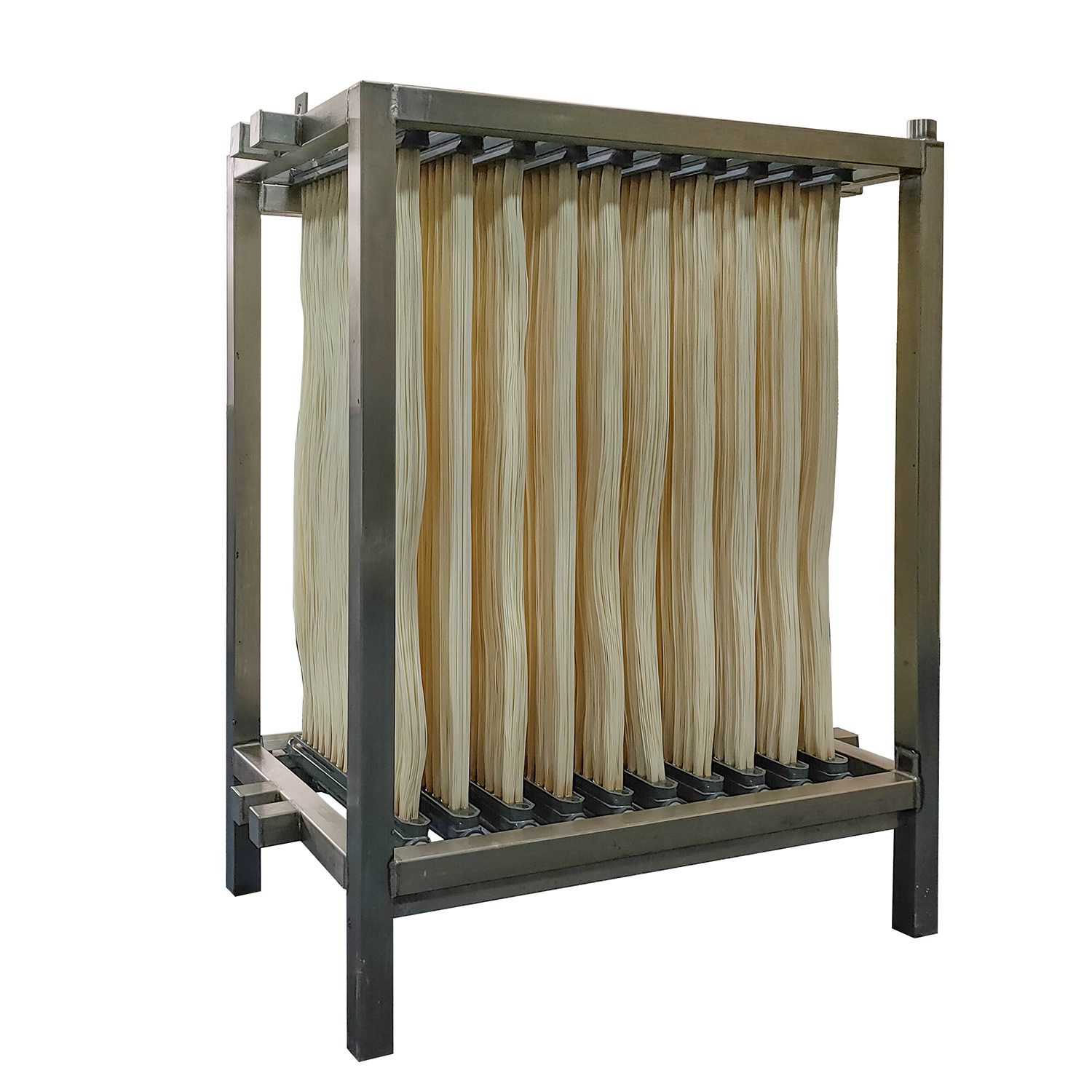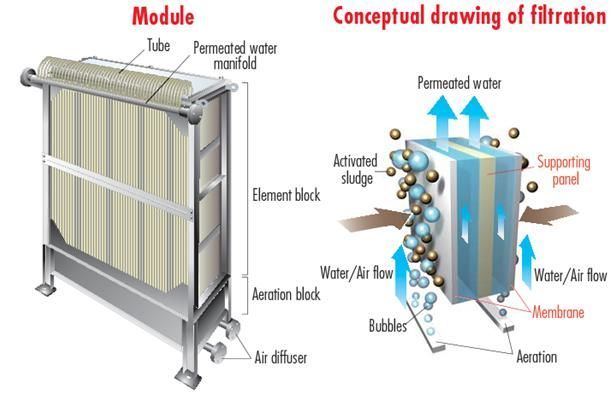Future Trends in Membrane Bioreactor Technology and Its Global Impact
Wiki Article
Membrane Layer Bioreactors Described: Reliable Solutions for Tidy Water
Membrane layer bioreactors (MBRs) have actually arised as a sophisticated remedy for attending to the pressing difficulties of wastewater therapy - Membrane Bioreactor. By integrating organic processes with sophisticated membrane layer filtration, MBRs not just boost the high quality of cured water however also reduce the spatial needs of therapy facilities.
What Are Membrane Bioreactors?
Membrane bioreactors (MBRs) are advanced wastewater therapy systems that integrate biological degradation procedures with membrane filtration technology. This integration permits the efficient elimination of impurities from water, making MBRs a preferred option in various applications, consisting of local wastewater therapy and industrial effluent monitoring.
Among the critical advantages of MBRs is their capacity to create top quality effluent, usually appropriate for reuse in watering or industrial processes. Furthermore, MBRs call for a smaller impact compared to traditional treatment systems, making them perfect for metropolitan settings where area might be restricted.
Additionally, MBRs can efficiently handle differing influent lots and are much less susceptible to the effects of harmful shocks. These qualities add to their growing popularity as a lasting solution for dealing with the raising demand for tidy water while reducing ecological influences.
Just How Membrane Bioreactors Job
While the operation of membrane bioreactors (MBRs) might appear complex, it basically focuses on the harmony between biological procedures and membrane filtering. MBRs incorporate an organic therapy process, commonly turned on sludge, with a membrane layer separation unit to treat wastewater efficiently.In an MBR system, wastewater is initial presented into a bioreactor where microorganisms weaken organic matter and other pollutants. The biological task reduces the focus of contaminants while promoting the growth of biomass. Following this biological therapy, the mixed liquor undergoes membrane purification, which can be microfiltration or ultrafiltration, depending on the wanted effluent quality.
The membrane layers work as a physical obstacle, allowing water and tiny solutes to pass while keeping suspended solids and bigger particles. This makes it possible for the system to keep a high focus of biomass within the reactor, boosting the treatment efficiency.
Moreover, the continual splitting up of cured water from the biomass assists in a small layout and decreases the impact of the therapy center. In general, the mix of organic destruction and membrane purification in MBRs results in reputable and efficient wastewater treatment, guaranteeing top notch effluent ideal for various applications.
Benefits of MBR Technology
One of the vital benefits of membrane layer bioreactor (MBR) innovation is its capability to produce premium effluent with a considerably reduced footprint contrasted to traditional wastewater treatment methods. MBR systems effectively integrate organic therapy and membrane filtering, leading to exceptional removal of contaminants, including suspended solids, pathogens, and organic matter. This capacity brings about effluent that commonly meets or surpasses rigorous regulative criteria for reuse and discharge.Additionally, MBR modern technology permits for higher biomass concentrations, which enhances the therapy performance and lowers the called for activator quantity. This portable layout is especially advantageous in city locations where area is restricted. The operational versatility of MBR systems additionally indicates they can adjust to varying influent qualities and flow prices, making them appropriate for a vast array of get redirected here applications.
In addition, the minimized sludge production related to MBR procedures adds to decrease functional and upkeep costs. The membrane layers function as a physical barrier, decreasing the risk of blocking and allowing longer functional periods in between cleaning. Generally, the benefits of MBR innovation make it an eye-catching remedy for sustainable wastewater therapy, resolving both ecological problems and the demand for efficient source management.
Applications of Membrane Layer Bioreactors
With their flexibility and efficiency, membrane layer bioreactors (MBRs) discover applications throughout different markets, try this out including metropolitan wastewater treatment, industrial processes, and also water improvement. In metropolitan settings, MBRs give a small service for treating wastewater, properly getting rid of contaminants while simultaneously producing top notch effluent that meets stringent regulatory criteria. This makes them especially ideal for areas with minimal area.In industrial applications, MBR technology is used for treating procedure water, specifically in markets such as food and drink, drugs, and petrochemicals. These industries profit from MBRs' capacity to handle high organic loads and their efficiency in recuperating beneficial sources from wastewater, such as nutrients and water.
Moreover, MBRs play a critical role in water reclamation efforts, making it possible for the reuse of dealt with wastewater for irrigation, commercial procedures, or perhaps as drinkable water after further treatment (Membrane Bioreactor). Their efficiency in removing toxins and virus makes them a reliable option for making certain water high quality in different reuse applications
Future of Water Therapy Solutions
The future of water therapy options is positioned for transformative advancements driven by technical advancement and enhancing ecological awareness. As international water shortage ends up being a pressing problem, brand-new techniques, consisting of membrane layer bioreactor (MBR) systems, are readied to play a crucial role in improving the effectiveness and sustainability of water treatment procedures.Arising innovations such as synthetic intelligence and artificial intelligence are anticipated to maximize therapy operations, enabling for real-time tracking and anticipating upkeep. This will boost the general reliability and efficiency of water therapy centers. In addition, developments in membrane materials, such as graphene and nanofiltration, guarantee to boost permeation prices and lower fouling, resulting check out this site in lower energy intake and functional costs.
In addition, the combination of renewable resource sources right into water treatment plants will add to greener techniques. The round economic situation design will also gain grip, motivating the recuperation of valuable sources from wastewater, such as nutrients and power.
Verdict

Membrane bioreactors (MBRs) have actually arised as an advanced solution for addressing the pressing challenges of wastewater therapy. By incorporating organic procedures with sophisticated membrane purification, MBRs not only enhance the top quality of cured water however also lower the spatial demands of therapy centers.One of the essential benefits of membrane layer bioreactor (MBR) innovation is its capacity to create high-grade effluent with a substantially reduced footprint compared to conventional wastewater therapy techniques.With their flexibility and effectiveness, membrane layer bioreactors (MBRs) find applications across different markets, consisting of metropolitan wastewater therapy, commercial procedures, and even water recovery.In conclusion, membrane bioreactors represent a considerable advancement in wastewater therapy technology, incorporating organic procedures with efficient membrane layer purification to create top quality effluent.
Report this wiki page